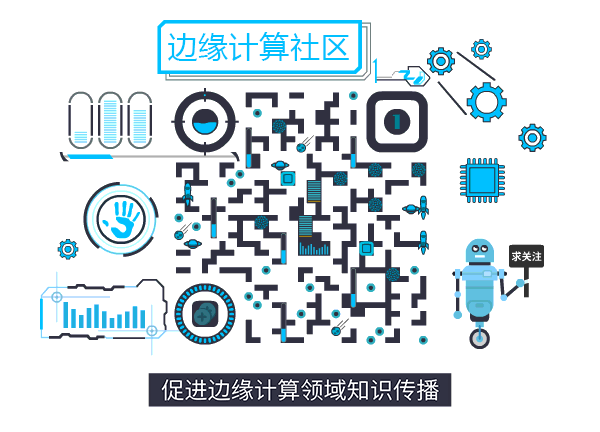Edge computing, as one of the key technologies of 5G, can push high bandwidth, low latency, and localized services to the edge of the network, solving problems such as excessive latency and traffic congestion, thereby providing better support for real-time and bandwidth-intensive services.
So, what is edge computing?
To talk about edge computing, we must first mention the octopus.
The octopus is one of the most fascinating animals on Earth.
In April 2016, an octopus named “Inky” crawled out of a half-open tank at the National Aquarium of New Zealand, walked across the room, and slipped into a drain, making its way back to the open sea after traveling through a 50-meter-long pipe.
Inky’s success once again proves to us that octopuses are one of the smartest groups of creatures on Earth.
Octopuses can not only squirt ink six times in a row but can also change their color and texture like the most agile chameleon, disguising themselves as a stone covered in algae before suddenly pouncing on their prey, which has no time to realize what has happened.

Image of an octopus
Indeed, octopuses are very smart and special, but what does this have to do with edge computing?
Actually, the octopus uses edge computing to solve practical problems.
As invertebrates, octopuses have a massive number of neurons, with 60% distributed across their eight arms (tentacles), and only 40% in their brains.
Octopuses are exceptionally agile and swift when hunting, with excellent coordination among their arms, never getting tangled. This is due to their distributed computing-like structure of “multiple small brains + one large brain”.
Edge computing is also a form of distributed computing: it processes collected data close to the edge at intelligent gateways, without needing to upload large amounts of data to distant core management platforms.
Having gained some understanding of edge computing, what exactly is it? Currently, there is no strict unified definition for edge computing, and it remains a field of diverse opinions.
In May 2016, Professor Shi Weisong’s team from Wayne State University in the USA provided a formal definition of edge computing: “Edge computing is a new computing model that executes computations at the edge of the network, with the objects of edge computing operations including downlink data from cloud services and uplink data from IoT services, where the edge of edge computing refers to any computing and network resources along the path from the data source to the cloud computing center, forming a continuum.”
The Edge Computing Industry Alliance defines edge computing as: “Edge computing is a development platform that integrates network, computing, storage, and application core capabilities at the network edge, close to the data source, providing edge intelligent services to meet critical industry needs in agile connectivity, real-time business, data optimization, application intelligence, security, and privacy protection.”
Let’s also look at the concept of edge computing as defined by Wikipedia:
Edge computing is a decentralized computing architecture that moves computation of applications, data, and services from central network nodes to the logical edge of the network for processing.
Edge computing breaks down large services that were entirely handled by central nodes into smaller, more manageable parts, distributing them to edge nodes for processing.
Edge nodes are closer to user terminal devices, which can accelerate data processing and transmission speed, reducing latency. Edge computing provides intelligent analytical processing services near the data source, reducing delays, enhancing efficiency, and improving security and privacy protection.

If the concept seems a bit lofty and hard to understand, don’t worry.
We consulted several industry veterans to discuss their views and understanding of edge computing.
Senior telecom expert Jimmy Chow believes that understanding Mobile Edge Computing (MEC) is as dynamic as the name itself, which is constantly changing; it is now referred to as multi-access edge computing.
People working in the MEC field come from either the IT or CT domain, and their perspectives are not entirely consistent, mainly reflecting differences in implementation models.
However, the focus on MEC by both IT and CT professionals is unprecedented, primarily due to the enormous potential for future commercial prospects.
Setting aside the differences in understanding between the two fields, both see the technological advantages of cloud computing in mobile edge networks for innovative business, shifting the current computing capacity of cloud/DC centers to the network edge, closer to users and applications, reducing network latency, and enhancing response speed, thus improving user QoE.
MEC opens up a vast vertical and horizontal application market, and it not only brings unprecedented business opportunities to traditional operators but also creates a vibrant edge ecosystem that will offer significant commercial opportunities for more third-party participants.
Senior expert from China Tower, Cao Sheng believes that the intelligentization of network edges is the future direction of industrial development, and edge computing will redefine the “cloud-network-end” relationship. The fundamental reason for the country to accelerate the construction of “5G new infrastructure” is to lead the world in technological transformation, promote the transformation and upgrading of the national manufacturing industry, and accelerate the development of the integrated innovative edge network economy.
The transformation and upgrading of the manufacturing industry proposed by various countries essentially involves the deep integration and industrial implementation of new generation information technologies such as the Internet of Things, cloud computing, edge computing, big data, and artificial intelligence with the manufacturing industry. Edge computing is a key technology of 5G, serving as the core of CPS, and will profoundly impact and transform “Industry 4.0”.
Edge computing is a revolution in architecture, supporting intelligent computing and the Internet of Everything in the 5G era. When the right time comes, with the advent of the 5G network, edge computing will emerge!
Senior product manager at Saitis, Xie Weiyou believes that edge computing, in a narrow sense, refers to the ETSI standard specifications. With the vigorous development of new infrastructure and digital infrastructure, edge computing has gradually integrated with 5G, cloud computing, big data, and artificial intelligence, gradually achieving the integration and innovation of OICT.
In the current era of digital transformation across various industries, edge computing is becoming increasingly ubiquitous, expanding from the traditional telecommunications sector to all aspects of the industrial Internet. The outbreak of the COVID-19 pandemic in 2020 has brought earth-shattering changes to the entire digital life and service sector, with popular applications such as online work, remote education, online healthcare, live e-commerce, and industrial Internet all treating edge computing as a key technological means.
Edge computing is not marginalization but rather ubiquitous.
Zhang Ligang from YunEx Cloud Intelligence comments that edge computing is like “Hamlet”, understood differently from various angles due to its broad scope.
Overall, edge computing can be divided into two main categories: cloud edge and IoT edge.
Cloud edge includes ETSI-defined Multi-Access Edge Computing MEC, as well as platforms such as AWS‘s Outposts.
The IoT edge combines edge computing with IoT scenarios, including industrial edge computing, etc., which can provide data analysis, AI inference, etc., achieving the connection from IoT to intelligent networking.
Edge computing, in conjunction with the 5G network, serves as the infrastructure for the digital and intelligent transformation of industries, and is also the foundational platform supporting digital twins.
Teacher Fu Wenjun from Zhejiang Mobile observes the development of MEC from the perspective of 5G. 5G is not the first windfall for MEC, but the development of MEC is difficult to separate from 5G. The possibility of an independent commercial closed loop for MEC is low, and some scenarios also require relying on the wireless capabilities of 5G to reshape traditional IT architecture, intending to separate display and storage.
As time goes by, you will gradually find that without MEC, it is very difficult for 5G to function, or rather, it is basically ineffective. If the edge is disconnected from computing, and computing is disconnected from the scenario, it is all just a castle in the air.
I define MEC as using 5G to cover the distance to UPF as quickly as possible. The subsequent development of 5G vertical industry solutions will mainly focus on dedicated network deployment, adaptation, and MEC APP applications, and it is highly likely that there won’t be a third form or model.
The above content is an excerpt from “The Era of Edge Computing”.
“The Era of Edge Computing” is a public welfare science popularization booklet meticulously crafted by the edge computing community. The booklet includes related introductions to edge computing, technical characteristics, mainstream open-source platforms, etc., with rich and easily understandable content.

The booklet was compiled with the participation of students from dozens of universities, including Xi’an University of Posts and Telecommunications, Shanghai Jiao Tong University, Cao Peirui, the Institute of Computing Technology, Chinese Academy of Sciences, and Peking University.
Welfare is here!
To thank everyone for their long-standing support of the “Fresh Date Classroom,” Little Date has partnered with the edge computing community to give away 30 copies of the “The Era of Edge Computing” concept booklet as a fan benefit!
Just leave a comment below this article sharing your views or insights on edge computing (no less than 20 words), and the first 30 comments will receive a copy of the “The Era of Edge Computing” concept book, with free shipping nationwide!
Ps: The deadline is July 1, 2020, at 6 PM.
Limited quantity, the earlier you comment, the greater your chance!
